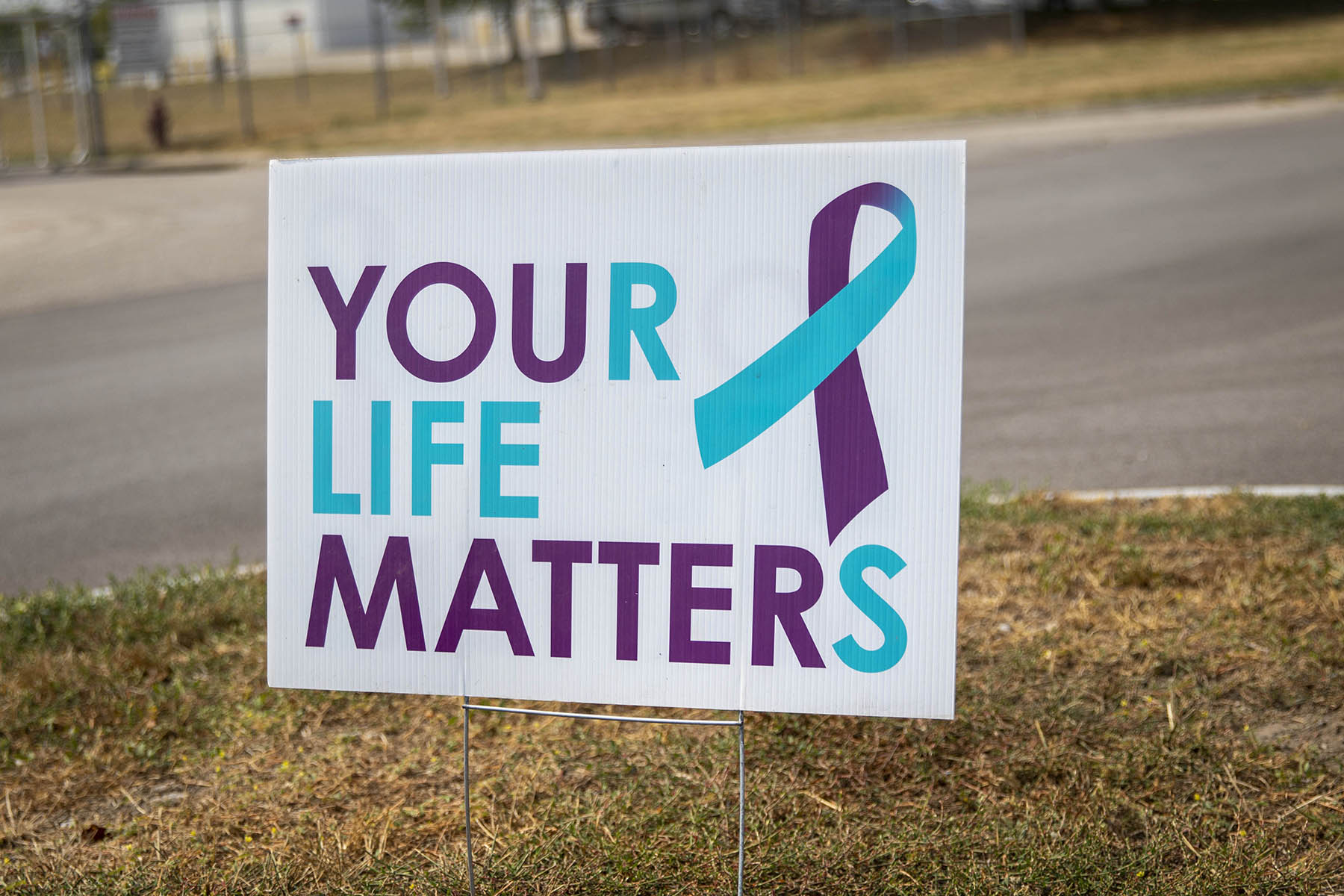
As suicide prevention month draws to a close, we must remember that the door is always open for dialogue, support, and raising awareness about the imperative of preventing deaths by suicide. And this door is open for everyone. It is open for those who are having thoughts of ending their lives, and it is open to those seeking to support individuals who are having suicidal thoughts.
Across the country, suicide remains a concern in all communities, and is on the minds of many. And for good reason as data continues to show that suicide impacts every corner of America, and demographic regardless of age, socioeconomic status, race or gender. We also see increasing impacts on brown and black adolescents and young adults. And Milwaukee is not spared from these concerns.
Given the far-reaching impact that suicide has not only on communities, but moreso on individuals, it stands to reason that the goal of suicide prevention efforts are that no one dies by suicide.
No one.
While it is a very aspirational goal, anything less would contradict what these efforts are all about. After all, we must strive to reach a point where no one’s life is relegated to a number that fills out a pie chart, graph or spreadsheet. Instead, we must remain keenly aware of each life, each individual and hold firmly hold onto our conviction that one death by suicide is too many.
These efforts at suicide prevention adopt such a stance. From programs in schools, mental health clinics, billboard campaigns, lectures, research and public awareness each casts a wide net with the aim of reaching thousands, upon thousands of people across the state and country. Yet, all with a singular intent of impacting one person at a time.
One life saved.
The beauty of this simple, yet far-reaching approach is that these messages serve the dual purpose of not only reaching those at risk of death by suicide, but also empowering others to be more aware, active and informed of what they can do to create a culture of connection and healing for others. These efforts, bit by bit, are conveying that it is okay to talk about suicide and suicide prevention, and that there need not be shame or apprehension about doing so.
By speaking openly about suicide and the importance of suicide prevention we are able to grow the community of support exponentially. The more voices raised, the stronger the community becomes. A community that may not be housed under the same roof, or reside in the same zip code, but are lockstep in our purpose, vision, and intention.
This is of the utmost importance as it is often that apprehension to talk about suicide that is born out of a longstanding stigma that many communities hold onto about merely broaching this difficult subject, let alone mental health. Across a wide array of settings, be they personal, professional or faith-based, the unwarranted stigma surrounding suicide not only hampers dialogue, but also fuels a sense of isolation that others may feel.
Navigating their world in silence, while not knowing, or even recognizing that help is out there. Not realizing that feelings of depression, doubt and uncertainty, at times are faced by others in their community. And tragically, by allowing that stigma to persist, at times it may contribute to the inaccurate perception that your journey is yours, and yours alone.
But by speaking about these very issues, in particular suicide, and understanding that everyone resides at varying points under the bell curve of mental health, we are able to open doors of dialogue without shame, and ideally with greater understanding and support.
And the more our community can speak about it with dignity, accurate information, and reason, the greater our understanding will be that this need not be a taboo subject, but rather one that is encountered, faced and can be overcome. Each conversation, each check-in and each connection helping to provide linkages and raise awareness about resources that can help to educate, and ultimately save lives.
Imagine what happens when one person discards long-held, inaccurate beliefs that historically have dissuaded others from talking about suicide, or the challenges they face throughout their lives. When that one person lets go of the false narrative of stigma or shame, and instead crafts one out of compassion, lived experience and support for themselves and others.
An accurate and sustaining narrative that on one hand acknowledges the challenges we all face, while on the other hand, understands that there are resources, supports and most of all, additional time to work through them in a healthy and affirming way.
When this happens, this newfound understanding has a way of casting aside stigma. It allows dialogue to overtake silence. And it sets the stage for connection to replace isolation. What once seemed like a solitary journey through challenges and emotional turmoil, now holds the potential to be one where there is a person to talk to, a number to call, or a place to go and connect with someone to help you get through.
Because when stigma is replaced by understanding and dialogue, others in our community may begin to realize that help is out there, and that feelings of depression, doubt and suicide at times are faced by many across Milwaukee County.
The challenges communities face when it comes to suicide prevention will not be resolved over the course of one column or conversation. But what each moment can do is bring to the surface the importance of dialogue, engagement, and a growing recognition of the available resources aimed at suicide prevention. Whether that be agencies, hospital systems, or the solitary acts of concerned individuals, each can make a difference.
To that end, the resources provided below are central to local and national efforts at suicide prevention. Whether by phone, online, and for some, face to face, each symbolizes yet another open door to gain access to valuable support and information about suicide prevention and mental health services. And in essence, each resource does more than just help someone “live to fight another day”. More importantly, it may end up inspiring them to make it through so that they can live to live another way, with purpose, intention, and hope.
© Photo
Lisa Crawford














